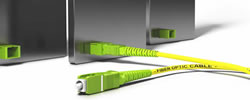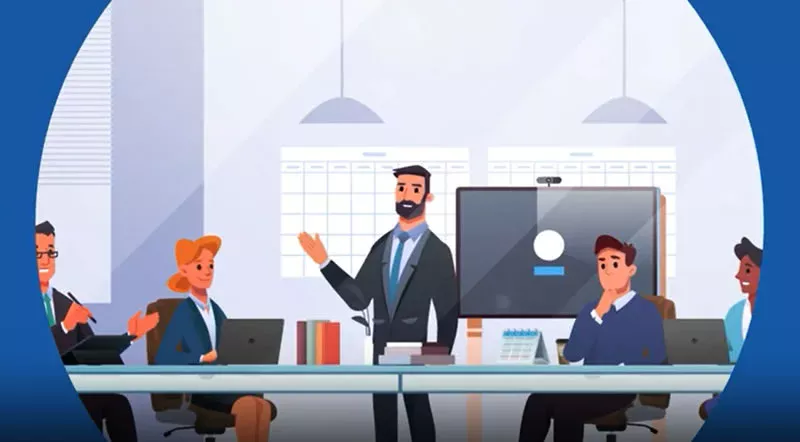Media Library: Blog
Read About New Trends in Broadband Technology
DOCSIS 4.0: Ushering in the Next Generation of Cable Internet
As the demand for faster, more reliable internet continues to surge, the cable industry is stepping up with a powerful new standard: DOCSIS 4.0. Short for Data Over Cable Service Interface Specification, DOCSIS 4.0 represents a major leap forward in broadband technology, promising multi-gigabit speeds and enhanced network efficiency. But what exactly is DOCSIS 4.0, and why is it such a big deal?
What is Wi-Fi 7? The New, Faster Standard!
Wi-Fi 7 is the latest innovation in Wi-Fi standards. Wi-Fi 7 takes speeds to a new height, with speeds up to 5.8 GBPS, according to Intel. Wi-Fi 7 also allows for multiple connections, providing speed and stability. For users, this means more stability and generally more responsive Wi-Fi connections.
Trends in Set-Top Box Deployments
As cable operators and telco providers are finding, traditional set-top box offerings are less interesting to customers than was previously the case, due to the rise of multiple streaming services. This has led to a decline in revenue related to video content delivery. As such, operators are looking for a new revenue sources that leverage Over-The-Top (OTT) services that can still generate revenue, while offering customers a way to stream such services as Netflix, Hulu, and the like.
How Network NoiseHawkAI Is Changing Network Monitoring
Network NoiseHawkAI uses advanced Data Labeling and Data Analysis algorithms, combined with Machine Learning techniques to localize upstream and downstream spectrum noise in an HFC plant down to a single component or network segment. This is done without inserting any physical devices into the network, the home or the headend. A NoiseHawkAI server or group of servers (scaled to fit the network) runs constantly, learning from results and from collected data.
Deciding if Automated Testing is Right for Your Application
From routers and modems to cable TV boxes and mobile phones, a variety of Customer Premise Equipment (CPE) are present in an even wider variety of today’s homes, businesses, offices, and other spaces. People rely on these devices daily to do work, communicate with friends and family, binge their favorite shows, get up to date on the latest news, and a lot more. The type of CPE installed will have a direct impact on the quality and reliability of the telecommunication service(s) a customer receives, and with how much people rely on these devices, you obviously want to guarantee customers a high-quality product that can keep up with their use if you are a provider. Automated testing helps you feel more confident in your product, but it can be costly – especially for CPE devices that have cellular capabilities. So, is automated testing worth it for your application? That’s the question we’ve set out to answer here.
What Is Cable Ingress
Every cable operator deals with cable ingress. Cable systems use radio frequency, or RF signals to provide video, telephone, and broadband internet services across the world. “Cable ingress” is the term used to describe a situations when indications are that a signal was disrupted somehow due to a lack of integrity in the closed RF network. Ingress can be caused by many issues, such as subscribers who install improper equipment like cheap splitters, or a break in an outside cable drop or a loose connector on an amplifier. Ingress describes the internal effect of such issues. An external result can be signal leakage, where the RF signal “leaks” and can be detected externally.
Using AI Technology to Automate Pinpointing Upstream Noise
As quoted from Buchanan, 2006: “the history of AI is a history of fantasies, possibilities, demonstrations, and promise. Ever since Homer wrote of mechanical “tripods” waiting on the gods at dinner, imagined mechanical assistants have been a part of our culture. However, only in the last half century have we, the AI community, been able to build experimental machines that test hypotheses about the mechanisms of thought and intelligent behavior and thereby demonstrate mechanisms that formerly existed only as theoretical possibilities.” While the foundation of AI technology was set in the 1950’s by such pioneers as Alan Turing, the hardware needed to deliver true AI has only become available in the last 20 years. With the theoretical foundation of AI in place, and hardware now available that is powerful enough to deliver, AI technology is changing the world every day. Recent news of a Google engineer being suspended because he released transcripts of conversations with his AI, called LaMDA (Language Model for Dialogue Applications), reflect the recent advances in AI technology. According to (TECHNOLOGY, 13 June 2022), these transcripts reflect where LaMDA appears to express fears of being switched off, talks about how it feels happy and sad, and attempts to form bonds with humans by talking about situations that it could never have actually experienced. AI is quickly adding new capabilities and asking new questions to technology and society.
Pandemic-Related Component Shortages and the Impact Across the Broadband Industry
As the US and other countries find themselves returning to some semblance of normalcy with COVID-19 vaccination rates rising, the impact of extended manufacturing shutdowns around the world is impacting daily life. The manufacturing shutdowns occurred over 2020 and early 2021 in key areas, and natural disasters like fires and weather also impacted production. Add to this the increased demand for computers and other internet devices during the lockdown period, and it’s easy to see how there is a shortage of semiconductor components. This shortage affects the availability of certain technology equipment and other goods across industries, from autos to appliances to computers and graphics cards and more.
What is Wi-Fi 6 and Why is It Important?
Wi-Fi 6, also known in its technical form as 802.11AX is the successor to the most widespread current Wi-Fi protocol now deployed, which is 802.11AC, or Wireless AC. Wi-Fi 6 is an upgrade in theoretical speeds to be sure but is also designed to improve performance when utilized by multiple devices. I’m sure that your household is no different than mine, in that many devices are trying to access the Wi-Fi connection all at once. This includes laptops, phones, tablets, gaming consoles, vacuums, on and on the list goes. Even back in 2018, the average number of devices connecting in a home was over 9. Now, with more people working and playing from home, that number is even higher.
What is CPE and Why Does It Matter?
CPE is an acronym for Customer Premise(s) Equipment, which refers to any piece of connected equipment that is used for accessing the Internet or generally accessing services on a provider network, whether directly or indirectly connected to that network. CPE can be provided by the telecommunications provider, such as a cable operator, telephone company or satellite provider. These companies either rent this equipment to the customer, provide it at no charge as part of the service, or allow a customer to purchase and provide their own equipment. As the name indicates, CPE will sit on the customer side of the network and can be a demarcation point between the provider network (WAN) and the customer’s home network (LAN).
Rural Broadband and FCC Expansion Explained
Many Americans do not live in urban areas of the United States of America. Instead, they live in rural areas of the country. There are many reasons for this, one of which could be lifestyle preferences. Perhaps, the reason is due to the level at which an individual is financially stable. For instance, living and working in a rural area is much cheaper and more affordable. Therefore, moving to a cosmopolitan area would cause the individual to become financially unstable. Whatever the reason, many Americans choose to work and live in rural areas of the country. However, the disadvantage of this decision is that these people that lack certain technological resources. More specifically, rural Americans lack access to digital communication and connection. As a result, these communities are left behind when it comes to certain services that are provided digitally. Luckily, the FCC has decided to give $244 million dollars to help jumpstart digital services to rural areas of the United States of America. In 2020 the world was hit with the global pandemic COVID-19, where it became more important than ever for rural communities to have access to television, wire, radio, cable, or satellite for entertainment, work, and the latest news.
The Challenges of Monitoring Upstream Noise in a Remote PHY Environment
The cable industry has been evolving the structure and performance of the broadband Hybrid-Fiber Coaxial (HFC) network since the inception of broadband internet in the mid-1990’s. This evolution has come in order to meet the ever-increasing thirst of the end-user for speed, delivered by higher bandwidth services. CableLabs, the industry standard-bearer for cable technology, has continually produced changes to the DOCSIS standards from DOCSIS 1.0 to the current DOCSIS 3.1 deployed in large part across major cable operators across the world. Each new version has brought higher bandwidth capacity to the HFC network and has steadily introduced fiber-optics deeper into the network. While some operators have moved entirely to a fiber solution, deploying Fiber to the Home (FTTH), others have embraced the incremental improvements from CableLabs that allow for use of the existing coax network they have invested in. The Converged Cable Access Platform (CCAP) is the latest version of technology, with multiple “flavors” springing from the CCAP design, most importantly designs based on a Distributed Access Architecture. Each new technology has increased scale and density to address this need for speed.
Why Promptlink Automated STB Solution is Right for You
Given the importance of the STB to a cable or satellite television set up, it has to be rigorously tested to ensure that it is functioning optimally before being deployed to a user. Done manually, STB testing is a time-intensive and laborious process, as there are many features that need to be tested, such as video and audio quality, integration testing, and user experience, among other things. Additionally, there are often hundreds, if not thousands, of STB units that typically are tested at a given time; this large volume significantly extends the testing process. To shorten the testing time and to increase the number of STB units that can be tested, it is necessary to automate the STB testing process.
What is broadband network noise and why is it difficult to find?
Setting up a broadband network for your business requires a lot of forethought and planning to ensure that it works optimally. Several considerations should be made when setting up a broadband HFC network; failing to address these can lead to a whole host of issues that are likely to hamper your network performance and may also negatively impact your business operations and processes. Of the various issues that could affect a cable network, one of the most prevalent and challenging to manage is broadband network noise or ingress.
How Do You Measure Network Health and Performance
It is important to regularly assess the health and performance of your network, as this has a significant impact on the success of your business.
Best Broadband Network Performance Monitoring Software
Using network performance monitoring tools enables you to take a proactive, rather than reactive approach to managing your network. Identifying and addressing potential issues rapidly before they can impact your business operations can save significant time and money.
What is DOCSIS/Euro DOCSIS Firmware and Why it is Important
Learn more about what DOCSIS/Euro DOCSIS is, the differences between the two, and why it matters.









